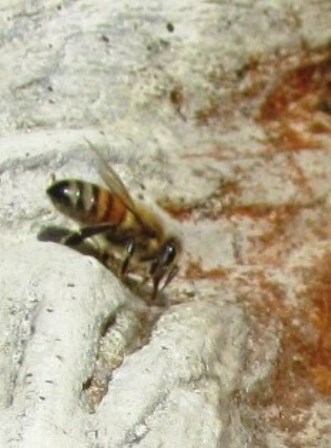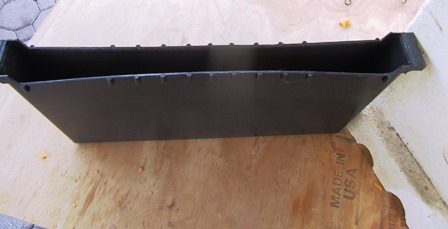To Feed or Not to Feed the Bees?
Mid-September is a time when beekeepers check their hives and consider the prudence of harvesting more honey or leaving it as well as whether or not to feed the bees. Honeybees, like many living creatures on our planet, need food and water to survive.
My wise beekeeper neighbor tells me that the hive needs to have sixty pounds of honey to make it through winter. He’s feeding his bees now a mixture of sugar and water.
The sugar-water inserts are black plastic holders that get inserted right into the hive in place of a frame. They are rigid enough to hold the sugar-water but pliant enough to swell outward, so conventional wooden frames of honey and wax help them stay in place. The downside is that bees can drown in these feeders. And if the beekeeper lets them go empty, the enterprising bees will just build comb and honey inside them.
There are several kinds of feeders–all with benefits and also drawbacks. For more information on feeders, see: http://www.honeybeesuite.com/what-type-of-honey-bee-feeder-is-best/
Last year, I didn’t take honey in the fall. I wanted to ensure the bees had what they needed to survive after they’d been through yet another summer of drought. There aren’t a lot of pollen-rich flowers to be found now. However, star-thistle still dots dry hillsides of Contra Costa County (where I live) and particular eucalyptus species that the bees like are blooming now.
I’m hopeful that this will be the last year of drought for a while. Weather forecasters say we have a strong El Nino that’s formed and will likely bring rain during our rainy season (November through April). That will be good news for the bees and those of us who love to plant flowers in our gardens to attract pollinators. But until the wet stuff starts coming down and new pollen sources are abundant, we beekeepers need to keep a close watch on our industrious little honeybees.
 Facebook
Facebook Goodreads
Goodreads LinkedIn
LinkedIn Meera Lester
Meera Lester Twitter
Twitter






